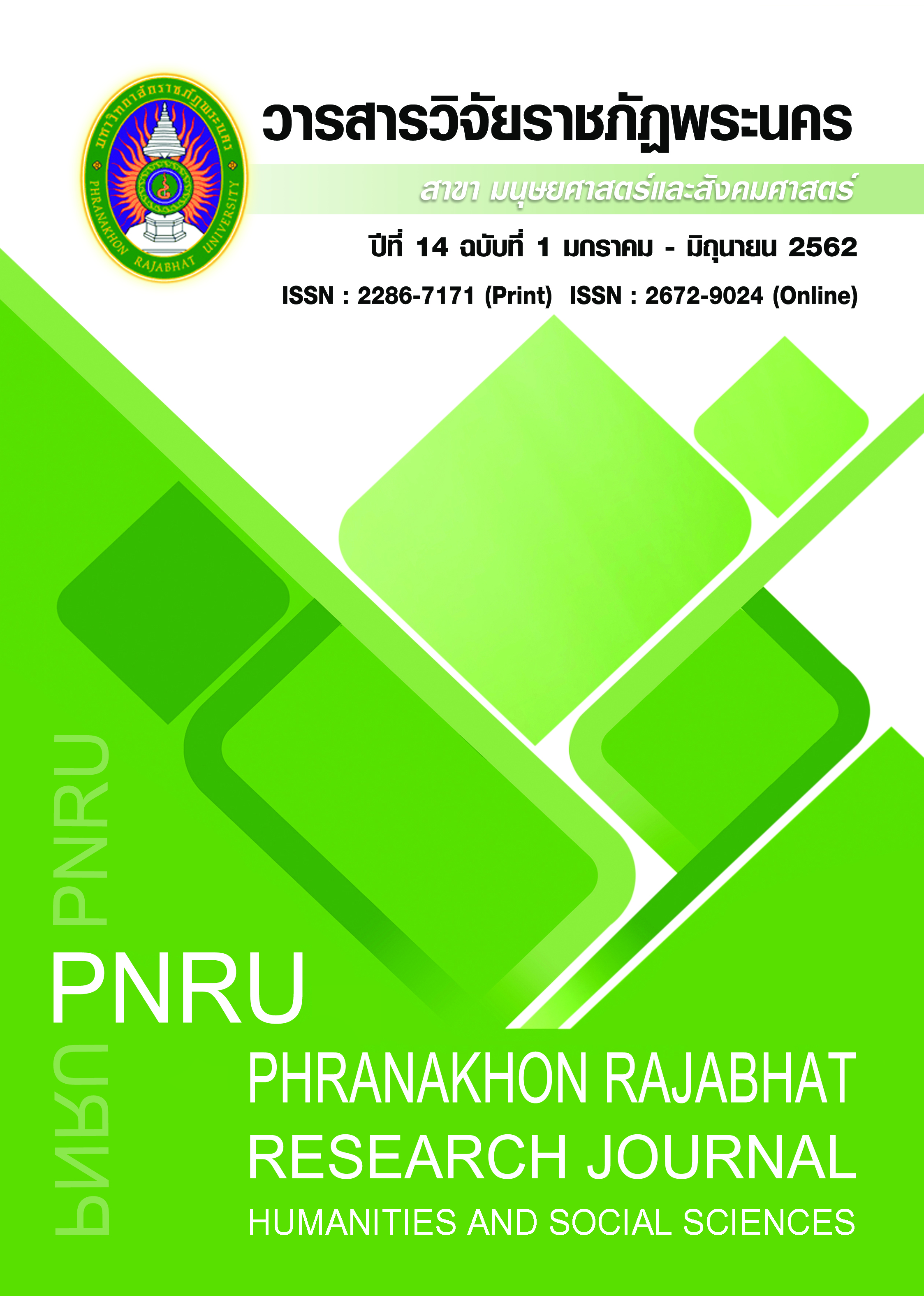SAMPLE SIZE AND SAMPLING IN QUALITATIVE RESEARCH
Main Article Content
Abstract
This article aims to present method of finding sample size or number of samples and sampling method or selection of key informants from population of qualitative research. According to relevant literature review, it is observed that size or number of samples depends on two requirements; (1) requirement for small samples can be determined by saturation or data redundancy, which summarize required number of samples size, and (2) requirement for large sample to demonstrate variation within target group, which needs large sample sizes to assess variety or patterns, expressed by target population, that are appropriate and interesting. Size or number of samples depend on research purpose and data collection method. Principles of projection or rule of thumb may apply such as social phenomena study with approximately 10 people for sample size (if data is sufficiency and saturated or redundant, sample size may be smaller). In-depth interview, approximately 30 people for sample size, group discussion with average 5-10 people per group, etc. Method of sampling or selection of key informants for qualitative research is conducted based on sample appropriateness principle as well as unique and diverse methods such as intensive sample selection, specific sample selection, sample selection based on specific criteria, which are unique samples related to research questions. Randomized or selected samples can provide reliable and adequate data for analysis to answer research questions.
Article Details
Each publish articles were copyright by Phranakorn Rajabhat University
Any contents which appeared in each articles in the journal were authors personal opinion. It did not relate to Phranakorn Rajabhat University and other instructors in the university. Each authors would take responsibility on their articles. If there are any mistake, the authors will take responsibility themselves
References
Camic, P. M., Rhodes, J. E. & Yardley, L. E. (2003). Qualitative research in psychology: Expanding perspectives in methodology and design. Washington, DC : American Psychological Association.
Charmaz, K. (2003). Grounded theory: Objectivist and constructivist methods. In N. K. Denzin, & Y. S. Lincoln (Eds.), Strategies for qualitative inquiry, 249-291. Thousand Oaks : Sage Publications.
Coyne, I. T. (1997). Sampling in qualitative research. Purposeful and theoretical sampling; merging or clear boundaries?. Journal of advanced nursing, 26(3).
Creswell, J.W. (1998) Qualitative Inquiry and Research Design Choosing among Five Traditions. Sage, Thousand Oaks, CA.
DiCicco‐Bloom, B., & Crabtree, B. F. (2006). The qualitative research interview. Medical education. 40(4), 314-321.
Gonzalez, C. (2009). Conceptions of, and approaches to, teaching online: a study of lecturers teaching postgraduate distance courses. Higher Education, 57(3), 299–314.
Guest, G., Bunce, A., & Johnson, L. (2006). How Many Interviews Are Enough?: An Experiment with Data Saturation and Variability. Field Methods, 18(1), 59–82.
Intaprom, W. (2018). Research in Public Administration. (2ndEdition). Bangkok : Mega Media Corporation. (in Thai).
Legard, R., Keegan, J. & Ward, K. (2003). In-depth interviews. In Jane, R. & Jane, L. (Eds.), Qualitative research practice: A guide for social science students and researchers, 138- 169. Thousand Oaks : Sage Publications.
Marshall, M. N. (1996). Sampling for qualitative research. Family practice, 13(6).
Morse, J. M. (1994). Designing funded qualitative research. In N. K. Denzin & Y. S. Lincoln (Eds.), Handbook of qualitative research (pp. 220-235). Thousand Oaks, CA, US: Sage Publications, Inc.
Nastasi B.K., Moore R.B. & Varjas, K.M. (2004). Applying psychology to the schools. School-based mental health services: Creating comprehensive and culturally specific programs. Washington, DC : American Psychological Association.
Patton, M. Q. (2001). Qualitative Research and Evaluation Methods. 2nd edition. Thousand Oaks : Sage Publications.


